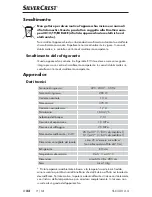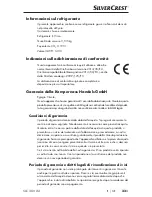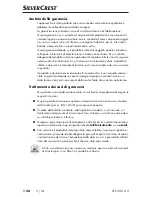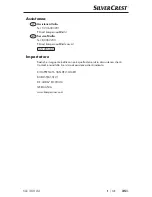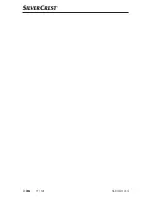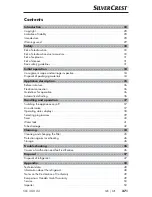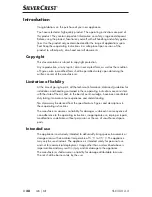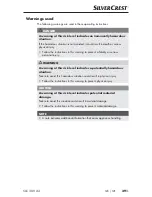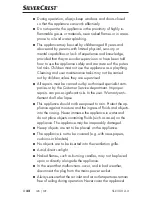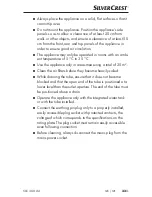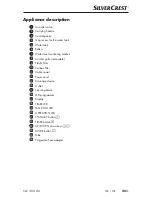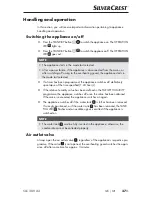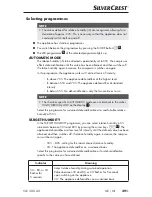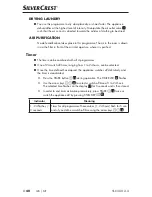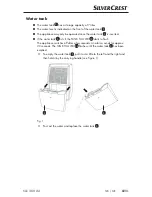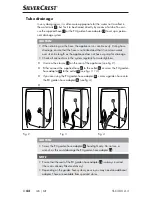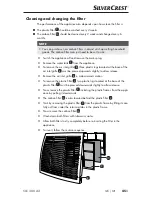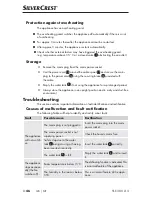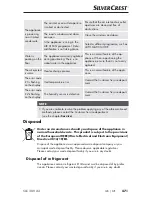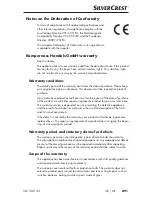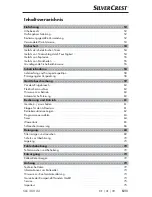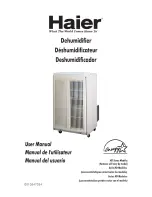
SLE 280 A2
■
36
│
GB
│
MT
Before initial use
♦
Place the appliance on a flat, dry and solid surface.
♦
Allow the appliance to remain in the deployment position for approx.
30 minutes so that the coolant can pool.
♦
Check that the float, located on the right-hand side of the water tank
5
,
is able to move freely.
♦
Check whether the water tank
5
has been correctly inserted.
♦
Connect the mains plug into a mains power socket.
Electrical connection
CAUTION
►
Before connecting the appliance, compare the specifications for the
required input voltage on the rating plate with the voltage source desig-
nated for operation. These data must be congruent so that no damage is
sustained by the appliance.
►
The power cable must always be easily accessible, so that the appliance
can be swiftly removed from the mains in the event of an emergency.
►
Ascertain that the power cable is undamaged and that it is not routed over
hot surfaces and/or sharp edges, otherwise it will become damaged.
►
Ensure that the power cable is not taut or kinked.
Guidelines for operation
■
Should the air in your living spaces consistently evince excess relative humidity,
the cause should be identified and addressed. (Sustained - year-round - venting
is generally inappropriate.)
■
The optimal ambient temperature for dehumidifying the air is 5 °C to 35 °C.
Using a dehumidifier at temperatures below 5 °C is redundant, as there is little
humidity in the air.
■
During operation, room temperature can increase by between 1 °C and 4 °C,
depending on the size of the room. This is normal.
Automatic defrosting
To ensure that the appliance does not ice up during sustained operation, it defrosts
automatically. This involves activation of dehumidification, with the motor running
at the highest setting. The ranges involved vary.

